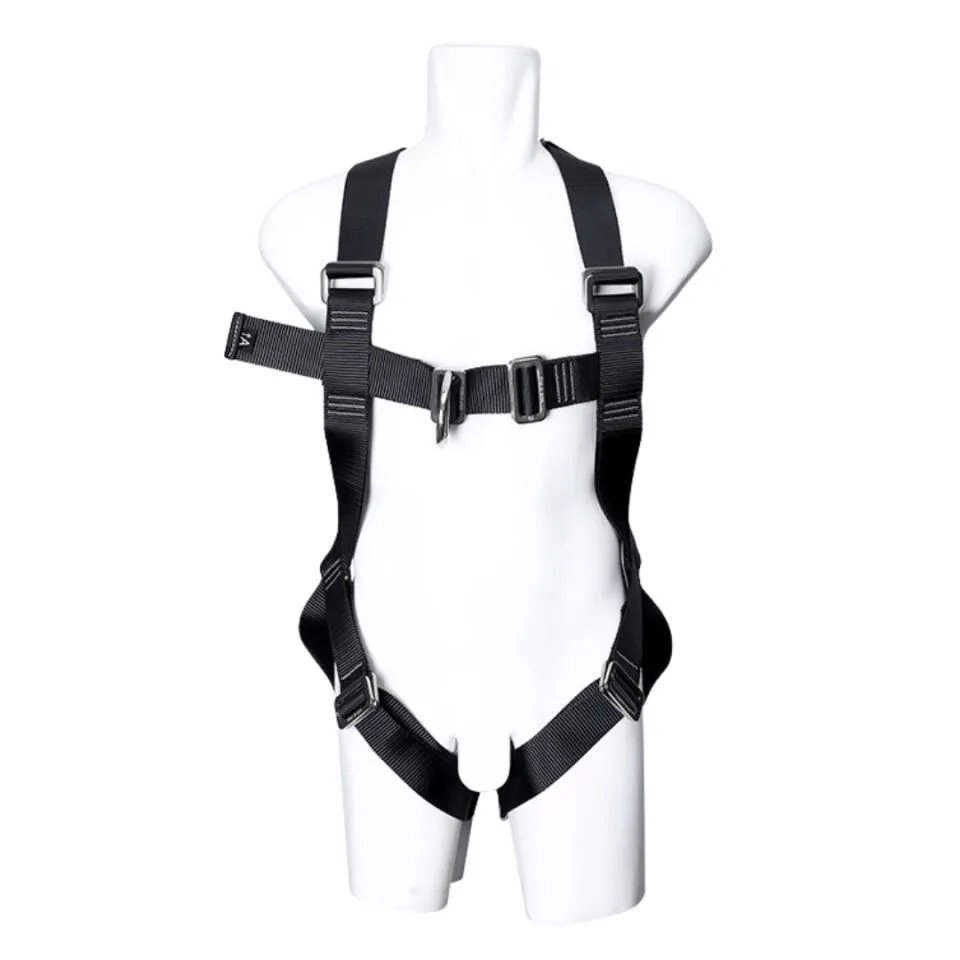How to Maintain and Care for a Full Body Harness to Ensure Safety
Working at heights requires reliable safety equipment, and a full body harness is one of the most important. However, maintenance and care for the harness are often neglected. Proper use of a full body harness includes following safety procedures, complying with laws and regulations, and inspecting before and after use, with a minimum inspection every six months.
This article will discuss how to maintain and care for a full body harness to keep it safe and reliable.

Properly Cleaning the Full Body Harness
Cleaning the full body harness is a frequently overlooked first step. Dust, dirt, and debris can damage the harness material over time. Here are some tips for cleaning? Use a soft brush to thoroughly clean the harness from dirt or dust. After brushing, clean it with water and ensure it is completely dry before using it again. Avoid direct sunlight exposure.
Important Notes:
- Avoid using solvent-based cleaners or aggressive chemicals, as they can damage the harness material.
- Lubricate moving parts, such as hooks and clips, with a manufacturer-approved lubricant.
- Always refer to the manufacturer's usage and care instructions and follow them carefully.
Routine Inspections to Detect Damage
Routine inspections are key to ensuring that the full body harness is always in top condition. Check all parts of the harness, including straps, hooks, and clips, to ensure there is no damage or wear that could compromise safety. Follow these steps:
- Visual Inspection: Conduct a thorough visual inspection of all parts of the harness. Look for damage, wear, or cracks on the straps, hooks, clips, and other components.
- Inspect Each Strap: Check for damage, knots, or scratches that could weaken the straps, especially at the ends where friction is common.
- Check Hooks and Clips: Ensure they are not damaged, worn, or sticking, and that clips can lock and open easily without obstruction.
- Examine Moving Parts: Check parts like floaters and hooks to ensure they move freely and function correctly.
- Check Labels and Instruction Tags: Ensure labels and instruction tags are legible and comply with safety standards.
- Examine Fasteners and Hooks: Look for wear, abrasion, or damage that could affect their function.
- Check the Fall Arrest System: Ensure all parts function well and there are no leaks or damage to the energy absorber.
- Check Tightness and Size Adjustments: Ensure all fasteners and size adjustments work properly. Straps should remain tight and not loosen after being worn.
- Inspect Stitches and Connections: Ensure there are no broken stitches or weak connections throughout the harness.
- Simulate Usage: Wear the harness and ensure all clips and hooks function correctly.
Proper Storage
Proper storage can extend the life of a full body harness. Store the harness in a dry place protected from direct sunlight. Avoid storing it in damp places or near chemicals that can damage the harness material.
Avoid Contact with Hazardous Chemicals
Hazardous chemicals can damage the harness material. Avoid direct contact with chemicals like acids, oils, or solvents. If contamination occurs, immediately clean the harness and ensure no damage has occurred.
Regularly Check Strap Tension
Strap tension is crucial for maintaining the full body harness's safety. Regularly check the strap tension to ensure the harness remains sturdy and can bear the given load.
Training on Proper Installation and Usage
In addition to maintaining the physical condition, it is important to train users on proper installation and usage. Ensure that users know how to wear and tighten the harness correctly and understand how to use each safety feature properly.
Check Clips and Hooks
Clips and hooks on the full body harness play a crucial role in bearing the load. Ensure all clips lock properly and hooks are in good condition. Inspect for any wear or damage on these parts.
Replace Damaged or Worn Parts
If you find damaged or worn parts during routine inspections, replace them immediately. There should be no compromise when it comes to safety. Use manufacturer-approved spare parts.
Check Instruction Tags and Safety Records
Many full body harnesses come with instruction tags and safety records. Review and follow all manufacturer instructions. These tags provide important information about usage limits, inspection procedures, and other safety warnings.
By following these tips, you can ensure that your full body harness is always in top condition. Regular maintenance and care will keep the user safe at heights and ensure the harness remains reliable. If you have any questions regarding SpanSet's full body harness, contact us via email at sales@spanset.co.id or follow us on social media for product information, tips, and updates in here.
For further consultation about SpanSet Indonesia products and services, please contact us via email at sales@spanset.co.id or WhatsApp
To find specification detail and prices of SpanSet Indonesia Products, please visit SpanSet Indonesia Marketplace on Tokopedia and Shopee.